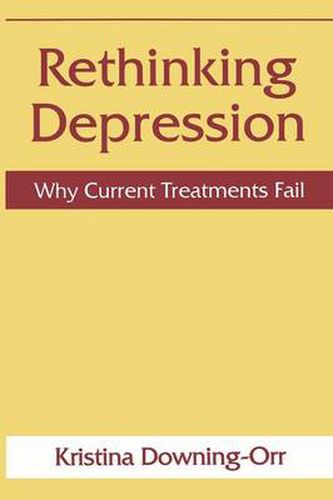Readings Newsletter
Become a Readings Member to make your shopping experience even easier.
Sign in or sign up for free!
You’re not far away from qualifying for FREE standard shipping within Australia
You’ve qualified for FREE standard shipping within Australia
The cart is loading…






This title is printed to order. This book may have been self-published. If so, we cannot guarantee the quality of the content. In the main most books will have gone through the editing process however some may not. We therefore suggest that you be aware of this before ordering this book. If in doubt check either the author or publisher’s details as we are unable to accept any returns unless they are faulty. Please contact us if you have any questions.
As both an academic and professional psychologist, my background is somewhat unique. Most psychologists either opt for the research route, where they study human behavior in the hope of generating insightful theories, or they choose to work clinically with clients and patients. The problems with these distinct pathways should seem appar ent. In their academic role, research psychologists study and gener ate numerous theories about people, both as individualsandas social beings. However, while their conclusions may provide the basis for therapeutic work, research psychologists are not clinicians. Con versely, clinical psychologists and other therapists are trained princi pally to work with clients and patients. While many clinicians carry out research projects, their time is mostly spent offering professional help to people. Although both roles serve to advance the science and practice of psychology, researchers in their ivory towers may find their abstract theories and conclusions are inapplicable in the real world, whereas therapists might discover they work within pre scribed treatment frameworks without questioning the limits of these approaches. Because of my two professional roles, I have aimed to bridge this gap. Here, I have combined my experiences of researching and treat ing depression with the intentions of improving treatments and of encouraging better communication between the two psychologies. Kristina Downing-Orr Oxford, England V Acknowledgments Many people provided the inspiration for this book, and I will be etemally grateful for all their assistance.
$9.00 standard shipping within Australia
FREE standard shipping within Australia for orders over $100.00
Express & International shipping calculated at checkout
This title is printed to order. This book may have been self-published. If so, we cannot guarantee the quality of the content. In the main most books will have gone through the editing process however some may not. We therefore suggest that you be aware of this before ordering this book. If in doubt check either the author or publisher’s details as we are unable to accept any returns unless they are faulty. Please contact us if you have any questions.
As both an academic and professional psychologist, my background is somewhat unique. Most psychologists either opt for the research route, where they study human behavior in the hope of generating insightful theories, or they choose to work clinically with clients and patients. The problems with these distinct pathways should seem appar ent. In their academic role, research psychologists study and gener ate numerous theories about people, both as individualsandas social beings. However, while their conclusions may provide the basis for therapeutic work, research psychologists are not clinicians. Con versely, clinical psychologists and other therapists are trained princi pally to work with clients and patients. While many clinicians carry out research projects, their time is mostly spent offering professional help to people. Although both roles serve to advance the science and practice of psychology, researchers in their ivory towers may find their abstract theories and conclusions are inapplicable in the real world, whereas therapists might discover they work within pre scribed treatment frameworks without questioning the limits of these approaches. Because of my two professional roles, I have aimed to bridge this gap. Here, I have combined my experiences of researching and treat ing depression with the intentions of improving treatments and of encouraging better communication between the two psychologies. Kristina Downing-Orr Oxford, England V Acknowledgments Many people provided the inspiration for this book, and I will be etemally grateful for all their assistance.